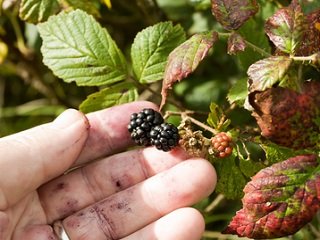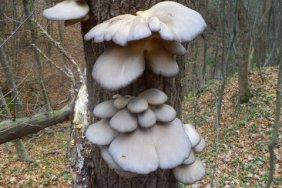 Anyone who’s spent some time in the outdoors has no doubt heard stories of lost hikers; it happens numerous times throughout the year. Unfortunately, there are instances where these stranded individuals perish, for any number of reasons. Sometimes, food can deplete quickly when an emergency arises, and hikers are simply unable to sustain themselves due to a lack of knowledge concerning what is edible and what isn’t. Today, I’ve listed several abundant food sources found in the wild that will help make finding food the least of your worries should you ever find yourself going hungry in the woods.
Anyone who’s spent some time in the outdoors has no doubt heard stories of lost hikers; it happens numerous times throughout the year. Unfortunately, there are instances where these stranded individuals perish, for any number of reasons. Sometimes, food can deplete quickly when an emergency arises, and hikers are simply unable to sustain themselves due to a lack of knowledge concerning what is edible and what isn’t. Today, I’ve listed several abundant food sources found in the wild that will help make finding food the least of your worries should you ever find yourself going hungry in the woods.
Protein is vital when it comes to energy conservation, and protein sources are all around you in the wild. You just have to know where to look. If you’re able, catching fish is a great way to obtain your protein and healthy fat requirements. Some avid hikers carry a travel fishing rod and tackle, but you can also make an emergency tackle box, which I outlined in my last article. If fish aren’t an option, you can always turn to ants, termites, or grasshoppers. Though, I suggest cooking grasshoppers before eating, just to make them taste a little better.
Greens are a great source of vitamins, and also potentially supply you with other nutrients, such as calcium or iron. Dandelions are a great option, but be sure to boil them if you can, to reduce their bitterness. Clovers are another choice, but whenever you resort to plants, be sure to know which ones are toxic and which ones are safe to eat. I like to employ a motto: “When in doubt, don’t.”
To get your fill on fruits, keep an eye out for clustered berries and when you find them, don’t be stingy; pick a lot of them. Any berries that look like raspberries are a safe bet. You can find them in large numbers along meadow edges. If you’re in a bind, look for hawthorne trees, which have large thorns, but sprout small, apple-like fruits. These you can eat, but don’t eat the pits; they can be poisonous.
Lastly, you can actually eat cattails, which are very abundant in many regions of the country. The roots and shoots of cattails are what you’ll want to eat, but be sure to wash and peel them to reduce any chance of ingesting pathogens from the water. Also, boiling them helps make them easier to eat. You can also reach upward and snatch a few acorns to munch on for a snack, though I suggest roasting or boiling them, as they can upset your stomach otherwise.
It’s amazing just how many edible options surround us at any given moment in the outdoors. We tend not to think about it because, more often than not, we have prepared food at our disposal. However, in an emergency situation, knowing what your food options when survival is on the line is invaluable knowledge. Keep the tips outlined above in mind when you’re on the trail; you never know when you might need them.








